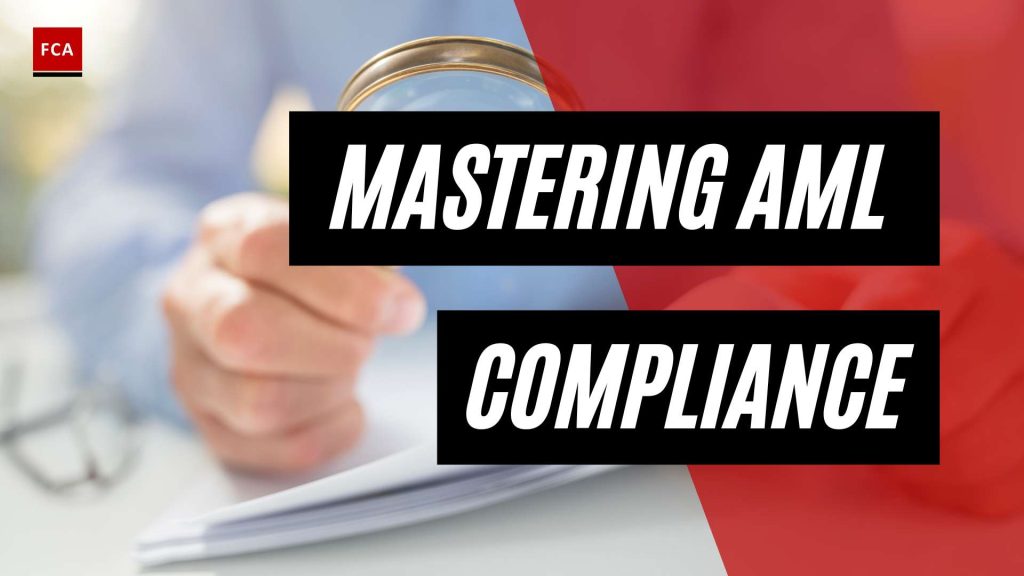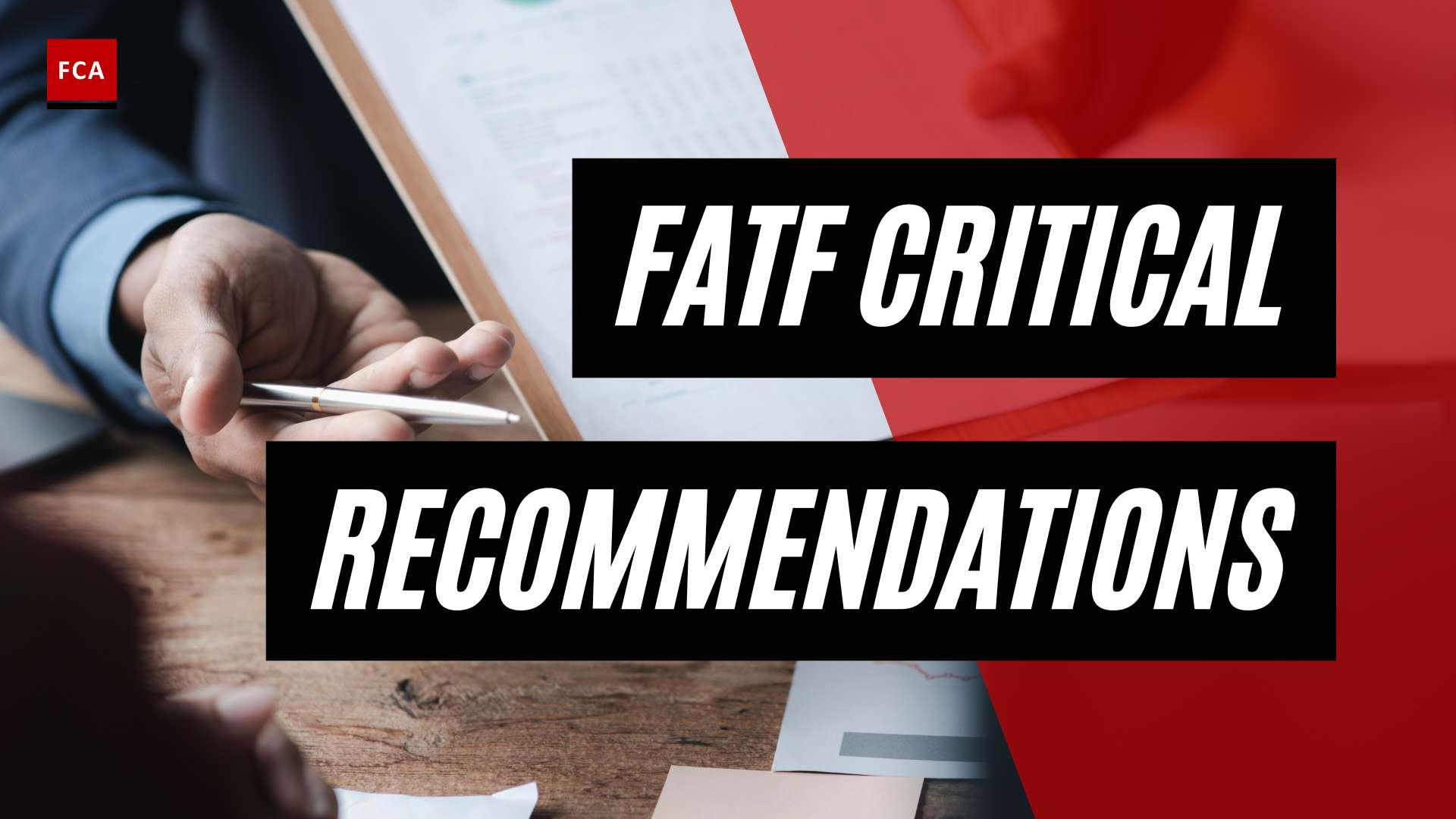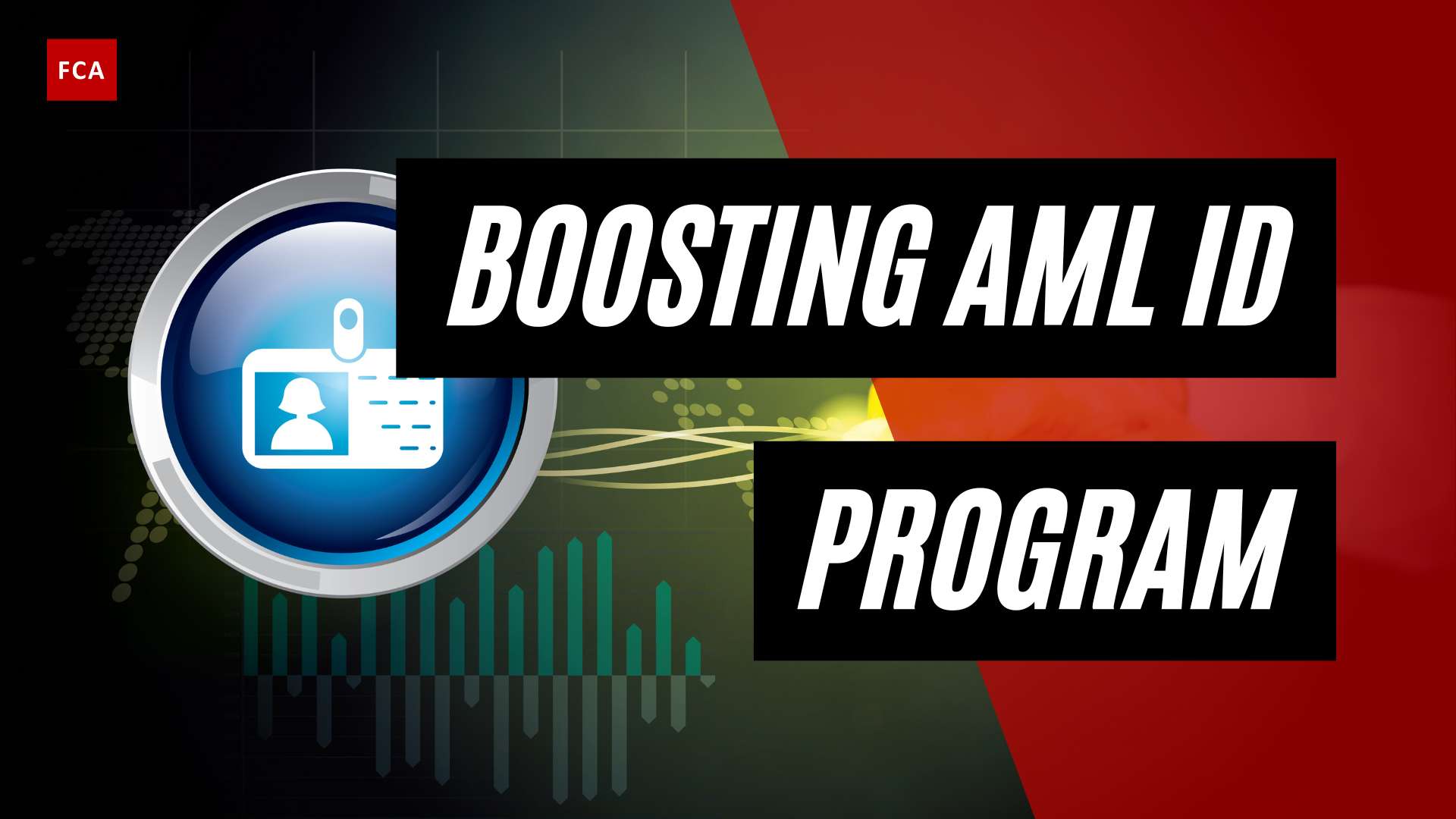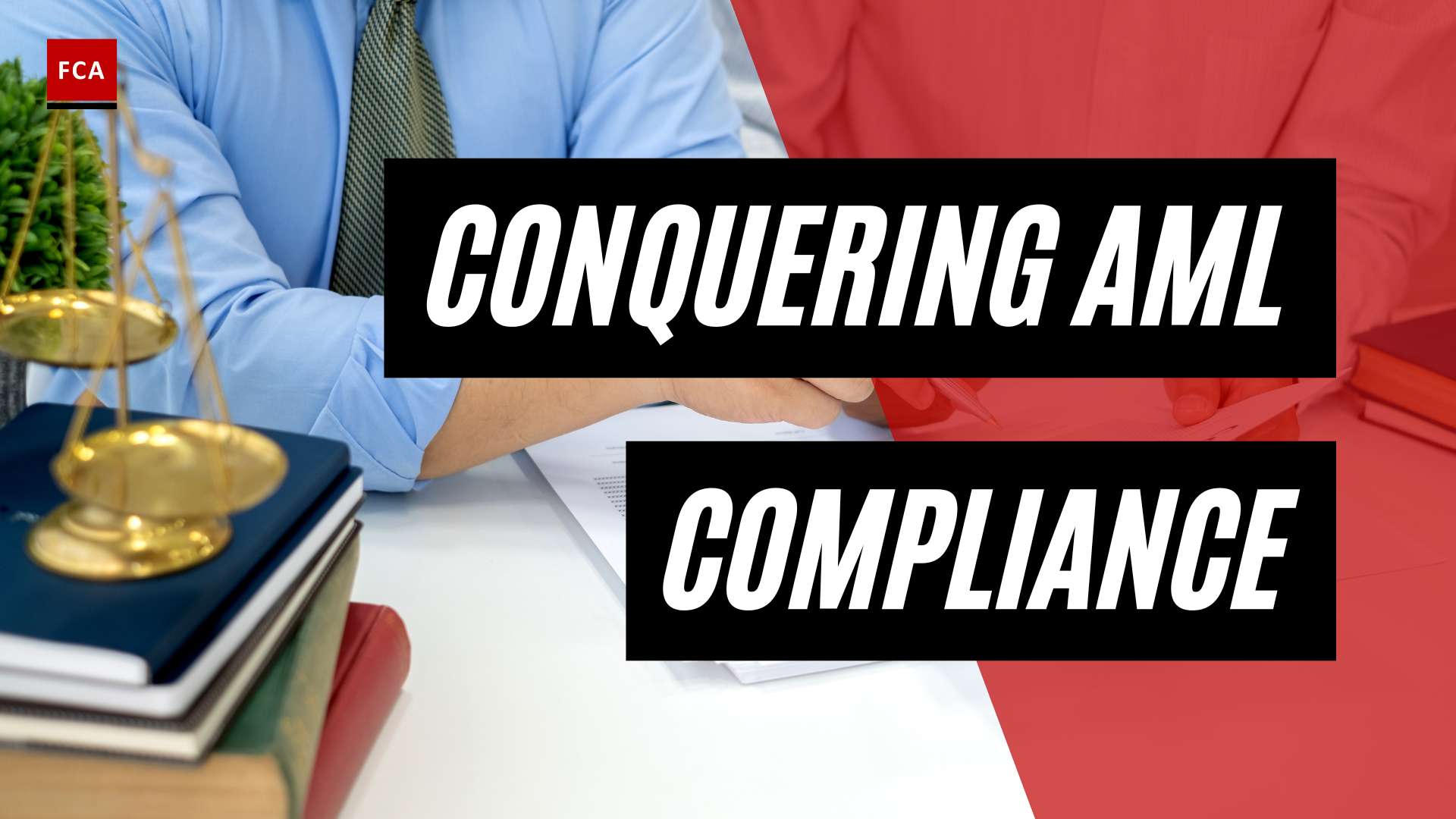Understanding AML Policy Framework
To effectively combat money laundering and protect the integrity of financial systems, a robust AML (Anti-Money Laundering) policy framework is essential. This framework encompasses various regulations and requirements that financial institutions and other regulated entities must adhere to. Understanding the importance of AML compliance and having an overview of the regulatory framework is crucial for professionals working in compliance, risk management, anti-money laundering, and anti-financial crime.
Importance of AML Compliance
AML compliance is of utmost importance in today’s global financial landscape. Alleged breaches of AML regulations have led to substantial fines against companies, indicating stricter enforcement and underlining the significance of compliance (LexisNexis). A strong and effective AML policy plays a pivotal role in preventing the infusion of illicit funds into the economy, maintaining the integrity and stability of financial systems worldwide (LexisNexis). By promoting transparency, accountability, and trust among businesses, financial institutions, and their customers, AML regulations contribute to a secure and credible financial environment.
Overview of AML Regulatory Framework
The AML regulatory framework consists of laws and regulations designed to prevent criminals from disguising illegally obtained funds as legitimate income. Financial institutions and other regulated entities are required to implement policies, procedures, and systems to detect and report money laundering activities (Investopedia). Key components of the AML regulatory framework include:
-
Criminalizing Money Laundering: Laws and regulations that make money laundering a criminal offense, providing a legal basis for prosecution and punishment.
-
Customer Identification and Due Diligence: Requirements for financial institutions to verify the identity of their customers and conduct due diligence to assess and mitigate the risk of money laundering.
-
Monitoring and Reporting Suspicious Activities: Obligations for financial institutions to implement monitoring systems to detect suspicious transactions and report them to the appropriate authorities.
Understanding the AML regulatory framework is essential for organizations to establish effective AML programs, ensure compliance, and mitigate the risk of facilitating money laundering activities. Compliance professionals must stay updated with the latest directives and amendments in AML regulations to adapt their policies and procedures accordingly. For information on the latest updates in AML regulatory frameworks, refer to our sections on AML Regulations in the European Union, AML Regulations in the United Kingdom, AML Regulations in Switzerland, and Recent Amendments in the United States.
Key Components of AML Policy
To combat money laundering effectively, an AML (Anti-Money Laundering) policy must encompass several key components. This section will explore the crucial elements of an AML policy, including criminalizing money laundering, customer identification and due diligence, and monitoring and reporting suspicious activities.
Criminalizing Money Laundering
Under the AML regulatory framework, countries are required to criminalize money laundering as a stand-alone offense. This means that individuals or entities involved in money laundering activities can be prosecuted under specific laws and regulations. By explicitly criminalizing money laundering, countries aim to deter and punish those engaged in illicit financial activities.
Criminalizing money laundering involves establishing legal provisions that define money laundering offenses, penalties, and enforcement mechanisms. These laws typically cover a range of activities, including the concealment, conversion, and transfer of illicitly obtained funds. By making money laundering a distinct offense, authorities can focus on combating the financial aspect of criminal activities and disrupt illicit financial flows.
Customer Identification and Due Diligence
Another critical component of an AML policy is the implementation of robust customer identification and due diligence measures. Financial institutions and regulated entities are required to establish procedures to correctly identify customers and verify their identities. This process, known as Know Your Customer (KYC), is essential for preventing money laundering and terrorist financing activities (Investopedia).
Customer identification involves collecting and verifying information about the customer’s identity, financial activities, and risk profile. This information is used to assess the customer’s potential exposure to money laundering risks. The extent of due diligence measures may vary depending on the customer’s risk level, with enhanced due diligence applied to high-risk customers.
By implementing robust KYC procedures, financial institutions can better understand their customers and detect any unusual or suspicious transactions. This helps prevent the use of financial systems for illicit purposes and ensures compliance with AML regulations.
Monitoring and Reporting Suspicious Activities
Monitoring and reporting suspicious activities is a crucial aspect of an effective AML policy. Financial institutions and regulated entities must establish systems and procedures to identify and assess transactions that may be indicative of money laundering or other illicit activities.
Monitoring involves ongoing scrutiny of customer transactions, including the identification of unusual patterns, large cash transactions, and other red flags. By implementing advanced technologies and data analytics, financial institutions can automate the monitoring process and efficiently identify potential risks and suspicious activities.
When suspicious activities are detected, financial institutions have a legal obligation to report them to the appropriate authorities. Reporting requirements differ across jurisdictions, but they generally involve filing Suspicious Activity Reports (SARs) or similar documentation. These reports provide law enforcement and regulatory agencies with valuable information to investigate and combat money laundering activities.
By actively monitoring and reporting suspicious activities, financial institutions play a pivotal role in preventing money laundering and maintaining the integrity of the financial system.
In conclusion, an effective AML policy consists of multiple components that work together to combat money laundering. By criminalizing money laundering, implementing robust customer identification and due diligence measures, and establishing monitoring and reporting systems, financial institutions can fulfill their regulatory obligations and contribute to the global fight against illicit financial activities.
AML Regulations in Different Jurisdictions
Anti-money laundering (AML) regulations play a crucial role in preventing financial crimes and ensuring the integrity of the global financial system. These regulations vary across jurisdictions, reflecting the unique legal and regulatory frameworks of each country. In this section, we will explore AML regulations in the United States, the European Union, and Nigeria.
AML Regulations in the United States
The United States has a comprehensive AML regulatory framework that aims to combat money laundering and terrorist financing. The Bank Secrecy Act (BSA) of 1970 was the first significant anti-money laundering law in the country, requiring financial institutions to assist U.S. government agencies in detecting and preventing money laundering (Investopedia). Subsequently, the USA PATRIOT Act of 2001 expanded the scope of AML laws and regulations, emphasizing customer due diligence, enhanced scrutiny of foreign correspondent accounts, and the use of new technologies for compliance and reporting purposes (Investopedia).
Financial institutions in the United States are subject to various regulatory bodies, including the Financial Crimes Enforcement Network (FinCEN), which enforces the BSA, and the Office of Foreign Assets Control (OFAC), which administers economic and trade sanctions programs. Compliance with AML regulations in the United States involves establishing robust AML programs, conducting customer due diligence, monitoring transactions for suspicious activities, and reporting such activities to the appropriate authorities.
AML Regulations in the European Union
The European Union (EU) has been actively harmonizing AML regulations to combat money laundering and terrorist financing within its member states. The EU updates its Anti-Money Laundering Directives (AMLD) periodically to standardize AML/CFT regulations across the bloc. Notable directives include the Fifth Anti-Money Laundering Directive (5AMLD), implemented on January 10, 2020, and the Sixth Anti-Money Laundering Directive (6AMLD), implemented on June 3, 2021.
These directives require EU member states to implement measures such as customer due diligence, enhanced scrutiny of high-risk transactions and individuals, and the establishment of beneficial ownership registers. The aim is to strengthen the EU’s ability to prevent money laundering and terrorist financing activities and improve cooperation among member states.
Financial institutions operating within the EU must adhere to these directives and implement robust AML programs. They are also required to conduct thorough customer due diligence, monitor transactions, and report suspicious activities to the relevant authorities.
AML Regulations in Nigeria
In Nigeria, the Central Bank of Nigeria (CBN) is responsible for overseeing AML regulations and combating the financing of terrorism. The CBN released the revised Anti-Money Laundering and Combating the Financing of Terrorism Regulation in December 2016, updating the AML framework in the country (Tookitaki).
The Nigerian AML regulations require financial institutions to implement risk-based AML programs, conduct customer due diligence, and report suspicious transactions to the Nigerian Financial Intelligence Unit (NFIU). The regulations also emphasize the need for continuous monitoring, training of personnel, and the establishment of internal controls to detect and prevent money laundering and terrorist financing activities.
Financial institutions operating in Nigeria must comply with these regulations and ensure the effective implementation of AML measures to safeguard the integrity of the financial system and protect against illicit financial activities.
Understanding the AML regulations in different jurisdictions is essential for businesses and financial institutions operating globally. Compliance with these regulations not only helps prevent financial crimes but also fosters trust in the financial system, ensuring a secure environment for economic activities.
Challenges in AML Compliance
Ensuring effective AML compliance is essential for organizations to combat the risks associated with money laundering and financial crimes. However, there are various challenges that institutions face in meeting regulatory requirements and maintaining robust AML programs. Here are three key challenges in AML compliance: increasing fines and stricter enforcement, managing cross-border compliance, and technology integration.
Increasing Fines and Stricter Enforcement
AML fines have witnessed a significant increase, indicating a global trend of stricter enforcement of anti-money laundering regulations (LexisNexis). Regulatory authorities are imposing larger fines against companies that are alleged to have breached AML regulations, highlighting the importance of compliance (LexisNexis). This trend places greater pressure on organizations to ensure robust AML programs and strictly adhere to regulatory requirements to avoid severe financial penalties.
Managing Cross-Border Compliance
Global financial institutions face the challenge of managing AML compliance across different jurisdictions. Each jurisdiction may have its own unique AML regulations, posing complexities and requiring organizations to navigate multiple compliance standards. Compliance with various AML regulations demands increased customer due diligence and identification of beneficial ownership, which can be time-consuming and resource-intensive for institutions operating in multiple countries.
Technology and AML Compliance
Advancements in technology have transformed the landscape of AML compliance, providing both opportunities and challenges. On one hand, technology has enabled automation and data analytics, allowing for real-time monitoring and detection of fraudulent activities (LinkedIn). These technological solutions enhance the speed and accuracy of fraud detection, reducing human error in the process. On the other hand, the increasing complexity of money laundering methods, such as the use of shell companies and digital currencies, poses challenges for financial institutions to keep up with evolving techniques (Sanction Scanner). Institutions must integrate technological solutions, such as know-your-customer (KYC) data and systems, to enhance compliance processes, which can be intricate and require data standardization across the organization (Sanction Scanner).
Addressing these challenges is crucial for organizations to achieve effective AML compliance. By staying up-to-date with the evolving regulatory landscape, implementing robust compliance programs, and leveraging technological advancements, institutions can navigate the complexities of AML regulations and contribute to the global fight against money laundering and financial crimes.
The Role of Technology in AML Compliance
In the ever-evolving landscape of AML compliance, technology plays a crucial role in enhancing the efficiency and effectiveness of anti-money laundering efforts. By automating processes, leveraging data analytics, and utilizing innovative technologies, financial institutions can strengthen their AML programs and combat financial crime more effectively.
Automation and Data Analytics
Technology is transforming AML compliance by automating processes and utilizing data analytics to analyze vast amounts of data in real-time. This allows for the detection of suspicious activities and enhances the speed and accuracy of fraud detection. By leveraging automation and data analytics, financial institutions can improve risk assessments, reduce false positives, and identify potential money laundering patterns more efficiently (LinkedIn).
One significant trend in AML compliance technology is the use of machine learning algorithms and data analytics to analyze data, identify patterns, and detect suspicious transactions. This allows for more accurate risk assessments and helps financial institutions stay ahead of evolving money laundering techniques (LinkedIn).
Blockchain Technology in AML
Blockchain technology has the potential to revolutionize AML compliance. By providing a secure, decentralized, and transparent platform for financial transactions, blockchain reduces the risk of fraud and aids in the identification of suspicious activities. The immutable nature of blockchain ensures that transaction records are tamper-proof, enhancing the traceability and auditability of financial transactions. This technology enables financial institutions to collaborate more effectively in sharing information, conducting due diligence, and preventing money laundering (LinkedIn).
Biometrics in Identity Verification
Biometric technologies, such as facial recognition and fingerprint scanning, are transforming AML compliance by providing secure and efficient methods of verifying customer identities. Biometrics help prevent identity theft and fraud by ensuring that individuals accessing financial services are who they claim to be. These technologies offer a higher level of security compared to traditional identification methods and contribute to more robust customer due diligence processes (LinkedIn).
The role of technology in AML compliance is rapidly evolving. Looking towards the future, artificial intelligence (AI) is expected to play a significant role in data analysis, further enhancing risk assessments and improving detection capabilities. Additionally, distributed ledger technology (DLT) is anticipated to continue transforming AML compliance by providing secure and efficient platforms for financial transactions. Financial institutions must stay abreast of these technological advancements to ensure they have robust systems and processes in place to meet their AML obligations (LinkedIn).
By embracing technological advancements, financial institutions can strengthen their AML compliance programs, enhance the detection of suspicious activities, and contribute to global efforts in combating money laundering and terrorist financing. The effective utilization of automation, data analytics, blockchain technology, and biometrics can significantly improve the efficiency and effectiveness of AML compliance processes, helping to safeguard the integrity of the financial system and protect against financial crime.
Future Trends in AML Compliance
As technology continues to advance, the field of anti-money laundering (AML) compliance is also evolving. Several future trends are expected to shape the AML landscape, including the use of artificial intelligence (AI), distributed ledger technology (DLT), and ongoing regulatory adaptation.
Artificial Intelligence in AML
Artificial intelligence (AI) is revolutionizing the way AML compliance is conducted. By leveraging AI algorithms and machine learning, financial institutions can analyze vast amounts of data and detect patterns that may indicate suspicious activities. This enables more accurate risk assessments and reduces false positives, allowing compliance teams to focus their efforts on the most significant threats.
AI-powered solutions can also automate various AML processes, such as transaction monitoring and customer due diligence, enhancing the speed and accuracy of fraud detection. By continuously learning from new data and evolving patterns, AI systems improve over time and adapt to changing money laundering techniques.
Distributed Ledger Technology
Distributed ledger technology (DLT), commonly known as blockchain, is another significant trend in AML compliance. DLT provides a secure and transparent platform for financial transactions, reducing the risk of fraud and aiding in the identification of suspicious activities.
By leveraging the immutability and decentralization of DLT, financial institutions can create an immutable record of transactions, making it difficult for criminals to hide illicit activities. This technology also enables the sharing of transaction data between participating institutions, facilitating information exchange and collaboration in AML efforts.
Ongoing Regulatory Adaptation
Given the constantly evolving nature of money laundering techniques, regulatory frameworks need to adapt and keep pace with emerging threats. Regulators are continuously revising and updating AML regulations to address new risks and challenges faced by financial institutions.
Ongoing regulatory adaptation involves close collaboration between regulators, financial institutions, and industry experts. Regular consultations, feedback mechanisms, and information sharing help ensure that AML frameworks remain effective and relevant in combating money laundering and terrorist financing.
Financial institutions must stay vigilant and proactive in understanding and implementing the latest regulatory requirements. This includes regularly reviewing and updating their AML policies and procedures to align with evolving regulations and best practices.
By embracing these future trends in AML compliance, financial institutions can enhance their ability to detect and prevent money laundering activities. The utilization of AI, DLT, and ongoing regulatory adaptation will play a crucial role in strengthening the overall effectiveness of AML efforts.
References:
International Cooperation in AML Efforts
Addressing the challenges posed by money laundering and terrorist financing requires global collaboration and information sharing. International cooperation plays a crucial role in strengthening the effectiveness of Anti-Money Laundering (AML) efforts. In this section, we will explore three key aspects of international cooperation in AML: information sharing and collaboration, Financial Action Task Force (FATF) guidance, and the role of supervisors and regulators.
Information Sharing and Collaboration
Effective AML frameworks rely on the exchange of information and collaboration among countries, financial institutions, and law enforcement agencies. Timely sharing of intelligence and suspicious transaction reports helps identify and track illicit financial activities across borders. By pooling resources and expertise, stakeholders can collectively combat money laundering and terrorist financing.
Bilateral and multilateral agreements facilitate the sharing of information among countries, allowing for a coordinated response to AML threats. These agreements often include provisions for the exchange of financial intelligence, mutual legal assistance, and joint investigations. The sharing of information enables authorities to detect and disrupt money laundering networks operating across jurisdictions.
Financial institutions also play a vital role in information sharing. They are required to report suspicious transactions to the appropriate authorities, facilitating the identification of potential money laundering activities. Collaboration between financial institutions and regulatory bodies enhances the effectiveness of AML measures.
Financial Action Task Force (FATF) Guidance
The Financial Action Task Force (FATF), an intergovernmental body, sets international standards and provides guidance on AML and combating the financing of terrorism (CFT). The FATF’s recommendations serve as a foundation for AML regulations and policies worldwide.
The FATF regularly publishes guidance documents and best practices that help countries strengthen their AML frameworks. The guidance covers various areas, including risk-based approaches, customer due diligence, beneficial ownership identification, and the use of new technologies in AML efforts.
Moreover, the FATF’s Mutual Evaluation Reports assess countries’ compliance with AML/CFT standards. These evaluations encourage countries to implement effective measures and address any deficiencies in their AML systems. The reports also highlight areas where international cooperation can be improved to enhance AML efforts globally.
Role of Supervisors and Regulators
Supervisors and regulators play a critical role in overseeing AML compliance within their respective jurisdictions. They are responsible for ensuring that financial institutions and other designated entities implement effective AML measures. Supervisors provide guidance, conduct inspections, and enforce compliance with AML regulations.
To keep pace with evolving AML challenges and technological advancements, supervisors and regulators need to foster ongoing dialogue with the private sector and technology experts. This collaboration allows for a better understanding of emerging risks and the development of effective controls. By adopting a risk-based approach, supervisors and regulators can promote proactive measures to combat money laundering and terrorist financing.
In summary, international cooperation is essential for combating money laundering and terrorist financing on a global scale. Information sharing and collaboration, guided by organizations such as the FATF, facilitate the identification and disruption of illicit financial activities. The role of supervisors and regulators is crucial in ensuring compliance with AML regulations and adapting to emerging risks. By working together, countries and stakeholders can strengthen their AML frameworks and protect the integrity of the global financial system.
Updates in AML Regulatory Framework
The field of Anti-Money Laundering (AML) is subject to ongoing regulatory updates and amendments in various jurisdictions. Staying informed about the latest directives and regulations is crucial for professionals working in compliance, risk management, and anti-financial crime. In this section, we will explore the latest updates in the AML regulatory framework in the European Union, the United Kingdom, Switzerland, and the United States.
Latest Directives in the European Union
The European Union (EU) periodically updates its Anti-Money Laundering Directives (AMLD) to standardize AML and Counter Financing of Terrorism (CFT) regulations across the bloc. The most recent directives include the Fifth Anti-Money Laundering Directive (5AMLD), implemented on January 10, 2020, and the Sixth Anti-Money Laundering Directive (6AMLD), implemented on June 3, 2021. These directives aim to enhance the EU’s ability to prevent money laundering and terrorist financing by introducing stricter regulations and expanding the scope of AML requirements (Ripjar).
AML Regulations in the United Kingdom
The United Kingdom (UK) has its own set of AML and CFT regulations, which include the Money Laundering, Terrorist Financing and Transfer of Funds (Information on the Payer) Regulations 2017, the Proceeds of Crime Act 2002, and the Terrorism Act 2000. Even after leaving the EU, the UK has committed to implementing aspects of the Sixth Anti-Money Laundering Directive (6AMLD), demonstrating the country’s dedication to maintaining robust AML measures.
AML Regulations in Switzerland
Switzerland regulates money laundering and terrorism financing through the Federal Act on Combating Money Laundering and Terrorist Financing in the Financial Sector 1997, also known as the Anti-Money Laundering Act (AMLA). Financial institutions in Switzerland are subject to AML and CFT reporting, record-keeping regulations, and screening requirements. The AMLA aims to prevent money laundering and terrorist financing by ensuring that Swiss financial institutions have strong AML measures in place.
Recent Amendments in the United States
In the United States, AML and CFT regulations are primarily governed by the Bank Secrecy Act (BSA) and the Patriot Act. The BSA, enacted in 1970, requires U.S. banks and financial institutions to implement internal AML programs. In response to the September 11 attacks, the Patriot Act was introduced in 2001, introducing new Customer Due Diligence (CDD) and screening requirements. The most significant recent amendment to the AML regulatory framework in the U.S. is the passage of the Anti-Money Laundering Act 2020 (AMLA). This act, signed into law in 2021, enhances AML and CFT measures in the United States by introducing various new requirements and strengthening regulatory compliance.
Keeping abreast of these regulatory updates is crucial for organizations and professionals involved in AML compliance. Adhering to the latest directives and regulations ensures that effective AML programs are in place, helping to combat money laundering and terrorist financing more effectively.








